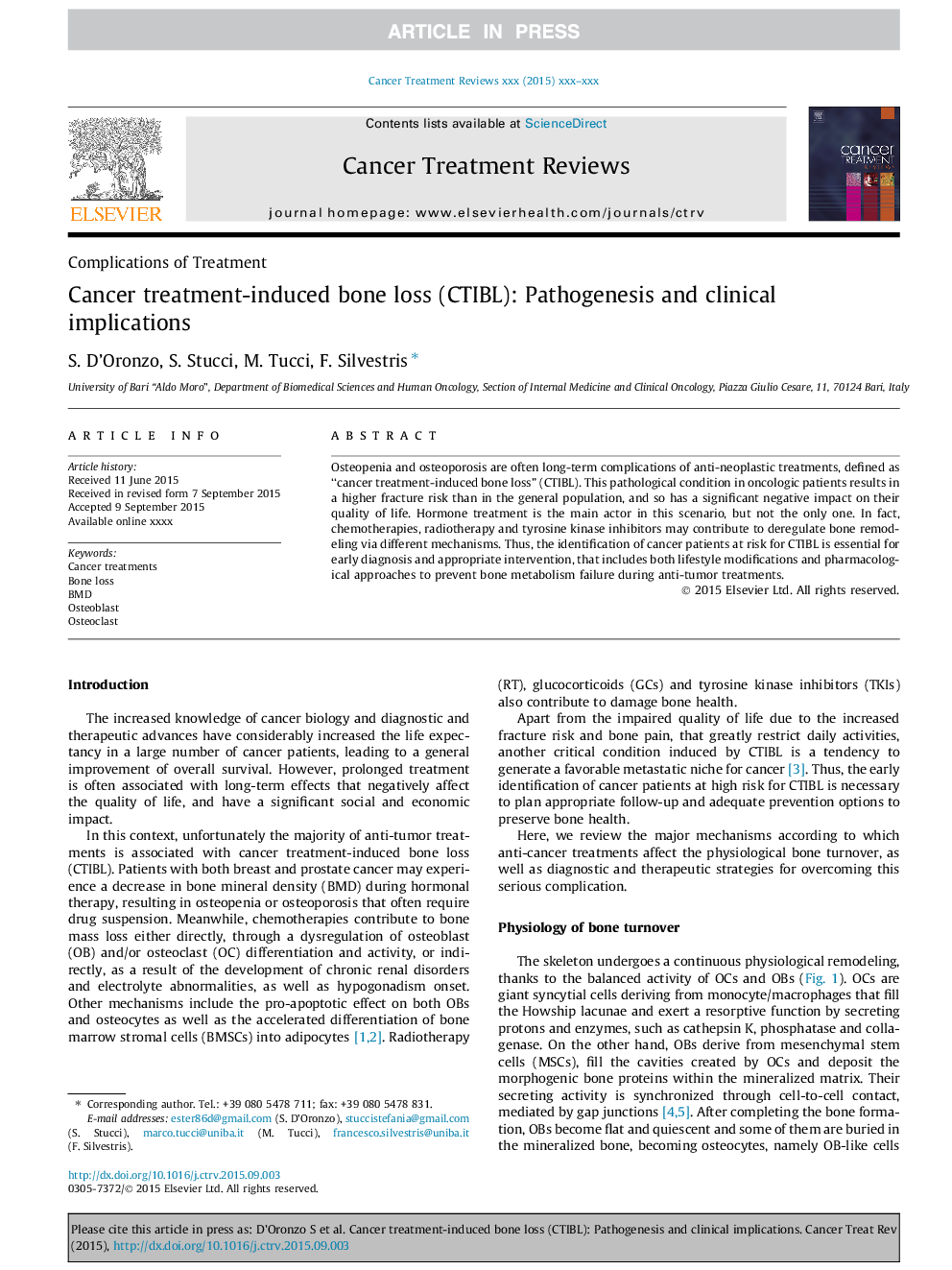| Article ID | Journal | Published Year | Pages | File Type |
|---|---|---|---|---|
| 6190472 | Cancer Treatment Reviews | 2015 | 11 Pages |
Abstract
Osteopenia and osteoporosis are often long-term complications of anti-neoplastic treatments, defined as “cancer treatment-induced bone loss” (CTIBL). This pathological condition in oncologic patients results in a higher fracture risk than in the general population, and so has a significant negative impact on their quality of life. Hormone treatment is the main actor in this scenario, but not the only one. In fact, chemotherapies, radiotherapy and tyrosine kinase inhibitors may contribute to deregulate bone remodeling via different mechanisms. Thus, the identification of cancer patients at risk for CTIBL is essential for early diagnosis and appropriate intervention, that includes both lifestyle modifications and pharmacological approaches to prevent bone metabolism failure during anti-tumor treatments.
Related Topics
Health Sciences
Medicine and Dentistry
Oncology
Authors
S. D'Oronzo, S. Stucci, M. Tucci, F. Silvestris,
